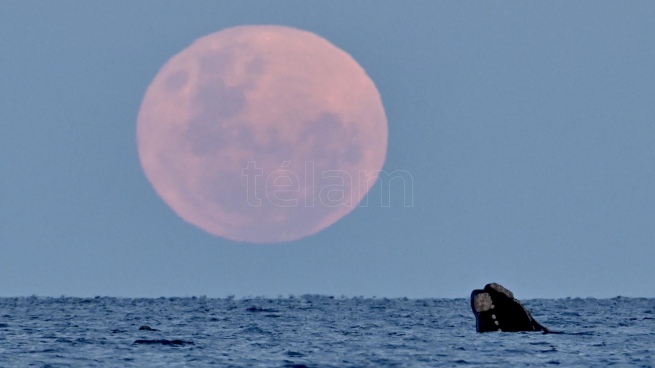After the solar eclipse of last May and the red moon of June, starting this Wednesday night the “supermoon of the deer” can be seen, an event that takes place every July 13when the Earth’s satellite is at the closest point to the planet and in its full phase, reported NASA and specialists.
In Argentina it began to be seen after 18 “7% larger than usual and 16% brighter” white, while in the Northern Hemisphere it can even be seen as orange, pink or red.
After sunset, it began to become visible, when it reached its perigee, that is, the shortest distance to Earth, which is 357,264 kilometers, and the maximum level of luminosity throughout the year.
? After sunset, this moon became visible in an event that takes place every July 13, when the satellite is at the closest point to Earth and in its full phasehttps://t.co/NARbTdume5 pic.twitter.com/dCDGPTC06n
—Telam Agency (@TelamAgency) July 14, 2022
This phenomenon can be seen until this Friday morning, while the next supermoon will be on August 12.
The sky of Buenos Aires appeared somewhat cloudy on Wednesday night, so it could not be observed in its great dimension, although it was noticeable brighter than usual.
It is known by this name because male deer fully develop their antlers in July. The males’ antlers shed and regrow each year, getting larger as the animals age.
According to NASA, this moon is also known as the Thunder Moon by the frequent electrical storms at the beginning of summer.

The July supermoon has various names in other latitudes. For example, in Europe they call it the Hay Moon because of the production of hay for June and July, and they also call it the Mead Moon.because this compound ‘a fermentation of honey with water, and sometimes adding fruits, grains, spices or hops- is manufactured these days, according to NASA.
For Buddhists, this July full moon is called Asalha Puja, also known as Dharma Day or Esala Poya, a major festival that celebrates the Buddha’s first sermon, says NASA.
Although it will be seen more clearly this Wednesday, the Deer Moon is visible from this Tuesday.
We’ve spent today looking across the universe, so let’s wrap it up with something a little closer to home.
Keep an eye on the skies for the Buck Supermoon, our next full Moon, on July 13: https://t.co/H9EI3XIZOu pic.twitter.com/RMAqLw7Qxv
— NASA (@NASA) July 12, 2022


















